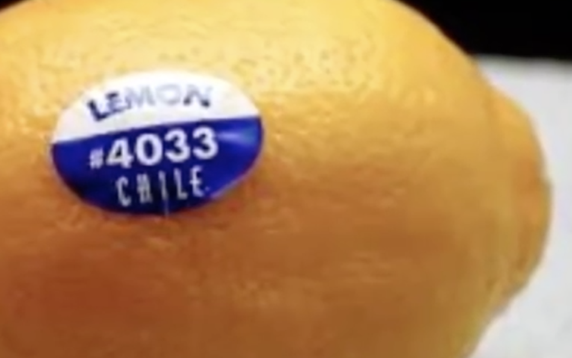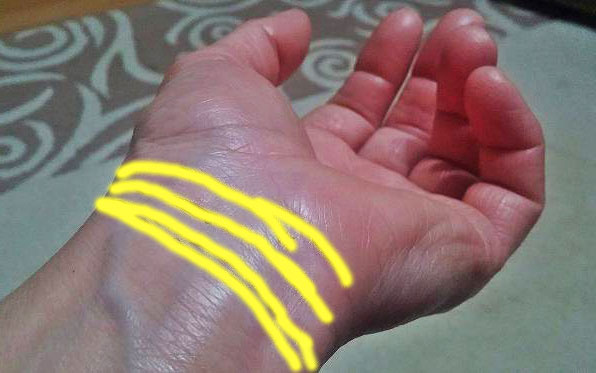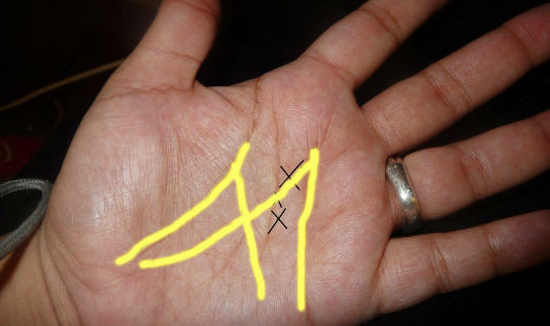
image via – youtube.com
Most people don’t think much about the little stickers that sometimes come on the fruits and vegetables they buy at the grocery store. The pesky round stickers always have a couple of numbers on them and despite what many people think, they aren’t there to simply annoy us.
The numbers are an items Price Look-Up (PLU) code, which are used and placed on unprocessed, fresh produce. Grocery stores and supermarkets use these codes to keep track of inventory and to speed up, streamline, and improve check-out times. The stickers and numbers readily identify the type of produce, commodity, variety, and how it was grown, thus eliminating the human error involved in cashiers guessing what specific type of produce an item may be.
Not all fruits and vegetables are labeled with a PLU sticker since, at least in the US, the codes are optional and not required by law. However, the produce that do feature them can tell you a lot about how that item was grown and whether or not it was genetically modified, produced with fertilizers and herbicides, or organically grown. Here are the main things you should know:
– If a PLU code has only four numbers total or begins with a 0, it indicates the produce was conventionally, or traditionally, grown with the use of common pesticides. Since it’s established fact that there are known health risks associated with ingesting pesticides, and that they can accumulate in our bodies, the codes can help you avoid these types of produce. An example of this is that a Macoun apple that has been traditionally grown will bear a PLU code of 3073.
-If a PLU code has five total numbers and it begins with an 8, it indicates the produce was genetically modified (GMO). Basically anything that is grown from a genetically engineered seed falls under this category and is not organic or traditionally grown. According to the video and the Monsanto website, there are 8 commercially available GMO types of crops that include corn, cotton, soybeans, alfalfa, canola, sugar beets, squash, and papaya.
However, since PLU codes are optional, many growers and suppliers purposefully don’t label their food because they know consumers will avoid anything labeled as GMO. For illustrative purposes, if you were to ever see a label with an 8 it’d look like this; 84011 for a genetically modified banana.
– If a PLU code has five total numbers and it begins with a 9, it indicates the produce was grown organically and is not genetically modified or engineered. Organic fruits and vegetables are grown without the use of any unnatural products like pesticides, herbicides, fungicides, insecticides, or synthetic fertilizers.
Thus, they’re healthier and much better overall for our bodies, the earth and environment. Women who are pregnant and young, developing children may especially benefit from organic produce.
Furthermore, if you want to buy and eat only organic produce, look for items that are labeled as 100% organic and USDA certified. Food labeled as such cannot be produced from any type or form of genetically modified organism and the US government regulates the term strictly according to law.
In comparison, some foods are labeled “GMO-free” and “non-GMO” but those terms are not set or regulated by any government body. Instead, groups of food companies form associations and they set the standards and regulate what qualifies as fitting under the label.
Since their business and bottom line is profit-motivated, and non-GMO labeled food often sells for a higher amount, there has been problems with misleading labels in the past. In short, they simply cannot be relied upon, on their own, as being absolutely 100% non-GMO. When in doubt, look for a 5 digit PLU that starts with a number 9 and packaging that clearly states the product is labeled as USDA certified, 100% organic.
Did you know about this?
Please Share This Information With Family and Friends 🙂








